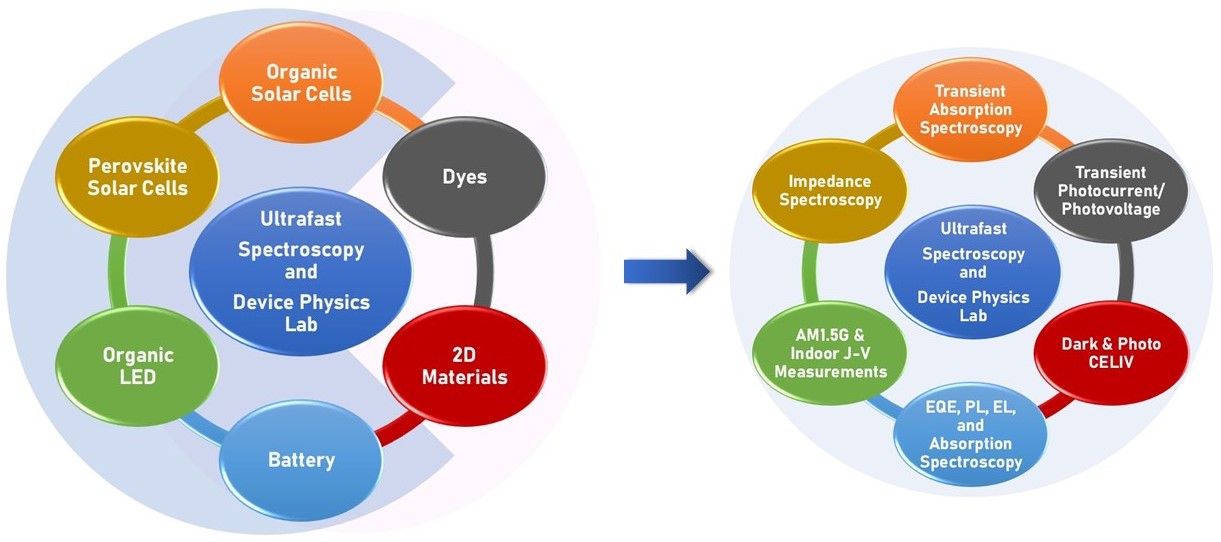


The ability to convert solar energy into electrical energy is pivotal in our endeavor towards an era of renewable/clean energy. We are currently at the forefront of research in physics, engineering, and material science, focusing on photovoltaic technologies. While silicon-based solar cell technologies have been well-established, we are now exploring the next generation of photovoltaic devices to meet our evolving needs. Organic solar cells emerge as a promising solution, potentially bridging this gap and propelling us towards achieving the UN Sustainable Development Goal 7 of 'affordable, reliable, sustainable, and modern energy for all.' Compared to silicon solar cells, organic solar cells offer a range of advantages, including being lighter, flexible, potentially disposable, and cost-effective. Currently, we explore the charge generation, charge transport, and recombination dynamics in bilayer and bulk heterojunction organic solar cells using a wide range of optoelectronic experimental techniques.
Flexible electronics refer to electronic devices and circuits that are designed to be bendable, stretchable, or conformable, enabling them to be integrated into various applications with unconventional form factors. By leveraging innovative materials and fabrication techniques, flexible electronics pave the way for lightweight, durable, and versatile electronic systems, revolutionizing industries such as wearable technology, healthcare monitoring, and smart packaging. We strive to grow and/or transfer optimized thin films on flexible substrates for high-performing optoelectronic devices.
Organic Photovoltaics (OPV) provides a low-cost and sustainable solution to power the increasing energy demand for the IoT ecosystem via indoor light harvesting. Conventional silicon-based PV systems are inappropriate for harvesting indoor light due to the low bandgap, while PV devices based on III–V semiconductors are inapt due to their sensitivity to structural defects and energy-intense processing requirements. At present, the performance metrics of indoor OPV devices are far behind the practical limit presenting a fertile space for strong improvements. The main reason behind this gap is due to the inadequacy of optimization specific to indoor light conditions. The direct translation of devices optimized for AM1.5G solar illumination with absorption window engineering suitable for indoor spectral conditions is insufficient to extract the full potential of indoor OPV devices. This presents significant research objectives as most of the present indoor device optimization is a mere translation of high-performing organic solar cells to a spectral matching suitable for indoor light settings. Additionally, we strive for the establishment of device optimization and characterization protocols specific to indoor illumination conditions.
Hybrid organic-inorganic perovskite (HOIP) is an excellent choice for solution-processed photovoltaics due to its high absorption coefficient (105 cm-1), band-like charge transport, long carrier lifetime, and diffusion length (> 1µm). Since the early reports of solar cells based on MAPbI3 and MAPbBr3 around 2009, the last decade has witnessed a dramatic surge of research activity in these classes of materials. The record efficiency of perovskite solar cells has exceeded the certified efficiency of 25% on a laboratory scale and has grown as a mature technology for commercialization. Many challenges related to long-term stability and large-area fabrications still need to be resolved. We focus on how we can combine HOIP solar cells with OPVs for efficient light harvesting with unique device architecture and device engineering. We also look at the stability aspects of HOIP solar cells and the potential for efficient indoor light harvesting.